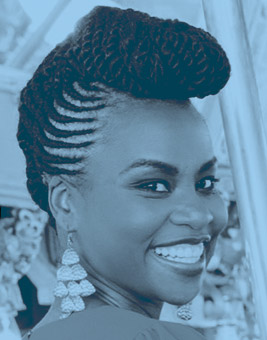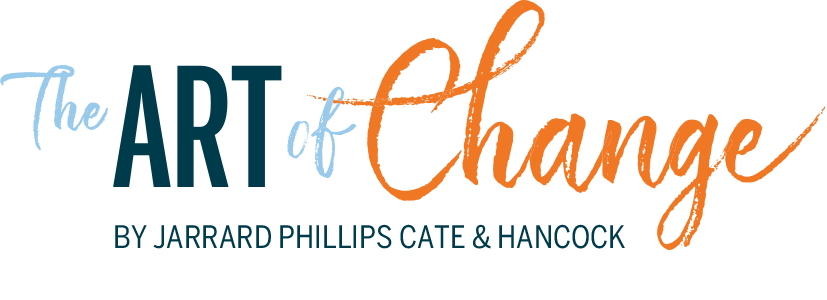
One Size Doesn’t Fit All: On Being Seen, Heard, Understood and Included in Healthcare
How does a guy who’s focused on urban design sum up inherent bias in healthcare?

Stillwell
“The things going on right now in this country are happening because we don’t see ourselves in design,” said Marquise Stillwell, founder of a New York-based firm that uses human-centered design to create better urban living.
Stillwell’s design work at Openbox – which ranges from transportation to education to healthcare sectors – connects people and resources in natural, comfortable ways.
That type of work is desperately needed in healthcare. Health disparities faced by communities of color across the country are no secret. Black and Latino populations face higher prevalence of and worse outcomes for many conditions. COVID-19 disproportionately affects people of color. The interplay between socioeconomic status and health is well-documented, access to care is challenge and bias – implicit and explicit – damages trust and creates barriers to care.
It’s long past time for that to change, and we have a responsibility to build a more inclusive, equitable and accessible healthcare system. It all starts with belonging.
Belonging and being seen

Thompson
“Business is about belonging,” according to Sonia Thompson, CEO of Thompson Media Group. “Your customers need to see and feel they belong with you. If they don’t, they’re going to go off in search of somewhere where they do.”
Another way to think about “belonging” is “being seen.” We’re certainly watching a very public example of that right now. “With everything that’s happening around social justice, this younger generation is pushing to be seen,” Stillwell observed. “That’s what it means when they say, ‘Black Lives Matter.’ They’re saying, ‘I matter, and I need you to see me.’”
What does belonging look like when it comes to healthcare? For one thing, it includes having access to people with similar backgrounds so that you, as a patient, can have conversations within a shared context. Stillwell recalled his own experience while sheltering-in-place of trying to schedule a telehealth appointment with a prominent primary care group. “I asked specifically, ‘Is there a doctor of color?’ They had a hard time finding one,” he said.
And that’s in New York, a city with a 25 percent Black population.
This matters, Stillwell said, because cultural references and cultural differences make for better conversations between people because they understand one another. If that trust and comfort isn’t there, why would providers expect people of color to come in for a visit?
One size is a lie
Thinking about this idea, a very clear feedback loop becomes apparent: It’s challenging for organizations where underrepresented communities aren’t represented to understand how those communities need and deserve to be seen and represented. Homogenous communities remain myopic without this perspective, leading to ongoing exclusivity and lack of diversity. It’s a flywheel: underrepresentation begets underrepresentation.
Thompson explained how this plays out more generally with the customer – and patient – experience:
“People have differences,” she said. “One size fits all” is a lie.”
She then put a very literal spin on that point: “While I was pregnant, I bought maternity pants that, strangely enough, said one size fits all. They did not fit. People are different. We’ve got different bodies, different experiences, different ways in which we view the world.”
In contrast, a positive, healthy experience results when you know that someone sees you – and your differences – and they tailor the experience so that you feel welcome, she said.
But be advised. Just putting diverse faces on marketing brochures doesn’t cut it. That’s just scratching the surface.
Thompson recalled a healthcare marketing campaign a previous client wanted to run. It would target African American patients and Latino patients using the same materials. Thompson knew that while the disease was the same, the messaging needed tuning so the unique groups could relate to it and be successful with medication and management. Applying this can take a number of different forms. For example, providing materials that describe physical activities accessible in specific environments rather than making blanket statements about exercise or encouraging an activity that isn’t available to the target population. In short, it’s speaking to specific cultural or demographic realities so that people know the advice has been developed with them in mind and offers practical – rather than unattainable – suggestions. “You need to acknowledge cultural nuances for people to be able to make a lasting change in their behavior,” Thompson said.
Thompson pointed to Proctor and Gamble for successful examples of depicting underrepresented populations AND demonstrating a deeper cultural awareness. She noted the My Black is Beautiful and The Look campaigns.
Momentum won’t carry you
A critical aspect of the inclusivity Thompson and Stillwell describe is that it is real, deep and active. It’s not a quick fix. Again, back those brochures:
Said Thompson: “It wasn’t just about putting a picture of a black family on the front. Maybe it’s a starting point, but it doesn’t acknowledge cultural differences that would make people say, ‘Yeah, I can see this information and how it applies to me.’”
Digging into the cultural differences to make information relevant requires empathy, research and a lot of listening. “You have to speak their language,” said Thompson. (And yes, in some cases that will be literal.)
Then you must keep doing it, consistently. That means showing up in a way that feels caring versus opportunistic.
“You can feel when somebody wants to get something from you, right?” Thompson asked. “When it comes to communities that have been ignored and underserved, you’re happy when somebody gives attention. But at the same time, you’re skeptical. You ask, “Why the person is here? What do they want?” Trust is earned by consistency in behavior and reputation and what you do over time.”
It’s hard work, not a day-long training session but an ongoing process. These topics are hard and can require rewiring of people’s ways of thinking. Organizations need to their train teams to see this as an organizational imperative – not because it’s what’s happening in culture right now and ‘we’ll get in trouble if we don’t do it.’ But because it’s the right thing to do.
Listen to learn
How do healthcare providers earn trust when it comes to underserved populations and people of color who may have been ignored by the healthcare system? Start by listening, Stillwell said.
When it comes to healthcare providers, he said questions can sometimes come across as asking “to gather information and then tell you what to do instead of asking so we can get to better questions and build a relationship.” The latter, more personal interaction can lead to better care, outcomes, experiences and satisfaction.
Thompson also looked at the theme of listening from the perspective of an organization presents itself and builds trust. He cautioned to make sure the messenger isn’t just delivering a message.
“They’re there to listen so you can open the door for two-way feedback,” he said. “You want your reputation to be consistent amid a world that’s constantly changing. Which means evolving in a way that’s true to your reputation. The only way to do that is to keep an ear to the ground so you can adjust your actions and your message to what’s going on around you.”
